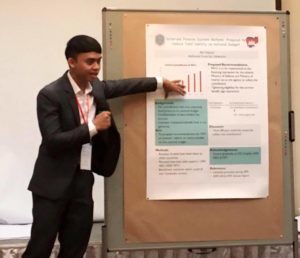CAMBODIA – The National Fund for Veterans (NFV) was created in 2010 to manage the administration of social security benefits of the armed forces and national police in Cambodia. It was established to centralize the administration and disbursement of benefits for veterans in order to increase efficiency, improve service standards, and strengthen the overall governance of the system. The scheme was originally designed to be contributory but to this day remains to be fully financed by the government.
Over the years, the total pension expenditure of NFV continues to rise even breaching the US$80 million mark in 2016. This huge government spending, which accounts for 8.3% of the total government expenditure, only ensures the coverage of 1.4% of the total population. While such spending is laudable, the budget only provides for one pillar of social security which is pension and this shows inefficient allocation of fiscal resources on the part of the government given that other social protection schemes such as health insurance is also wanting in Cambodia.
Currently, the increasing government subsidy is imposing fiscal pressure on the national budget because no contribution rate has been set for more than a decade already. Attempts to negotiate for a viable contribution rate remains unsuccessful to this day for a number of reasons including difficulties in stakeholder buy-in, and reluctance of concerned agencies to provide information related to the working population of the military and the police force as well as their salaries. On top of these, the benefit level is seen to be too generous which have been indexed far too many times within a year.

In a recent policy paper[1] presented by Mr. Nix Dipaul, an ISPS scholar, he proposes a shift towards a pay-as-you-go (PAYG) system as a potential solution to the current predicament of the pension scheme for veterans and a means to rationalize financing. His calculations based on the number of beneficiaries and the estimated military and police force showed that the support ratio[2] of the existing scheme is at 28%, which means that it will take a 100 contributing members to fund the benefits of 28 beneficiaries. There will still be adequate space to ease the burden placed on the contributing population by veterans if a sustainable financing scheme such as a PAYG will be adopted. His recommendation will finally put into place a contributory scheme with the Ministry of Defense and Ministry of Interior as two viable collecting agencies. The paper further recommends tightening the eligibility requirement for survivor benefits particularly on age restriction as a supporting policy.
Should the policy proposal be considered, additional institutional capacity building of the involved ministries and social security institution would be needed to improve the planning, design, management, ownership and delivery of social protection benefits to the target population.FXF
Links to sources and references are cited in-text.
Notes:
[1] Dipaul, Nix (2017). Veterans Pension System Reform: Proposal to reduce fund liability on national budget. National Fund for Veterans, Cambodia.
[2] In pension systems, the support ratio is an important indicator used to determine the number of people who are contributing to the system against every elderly person who are eligible to avail of the benefits.